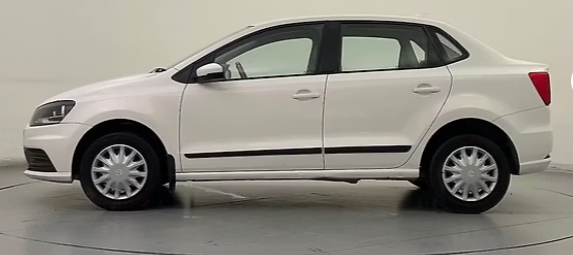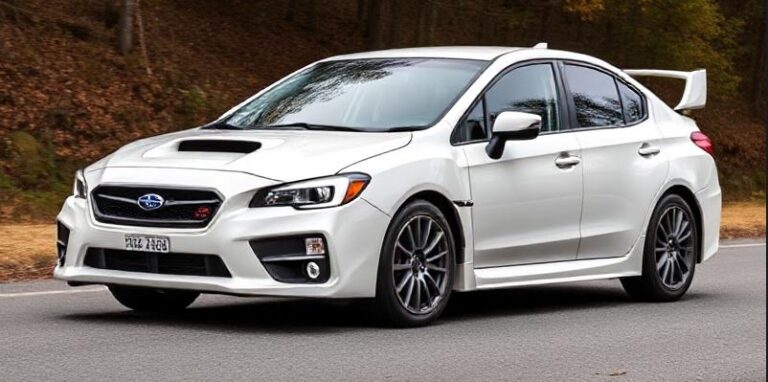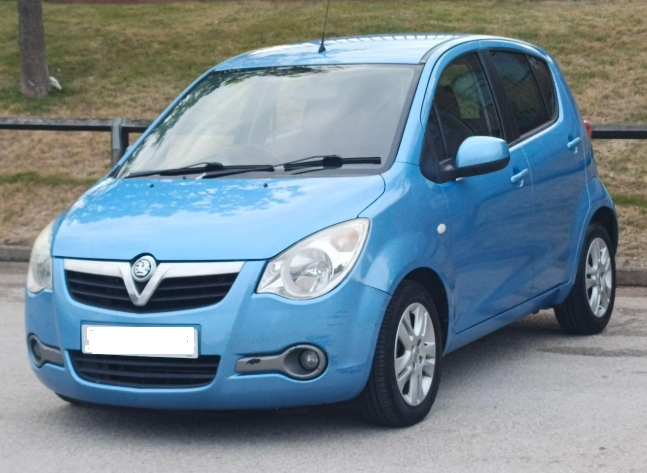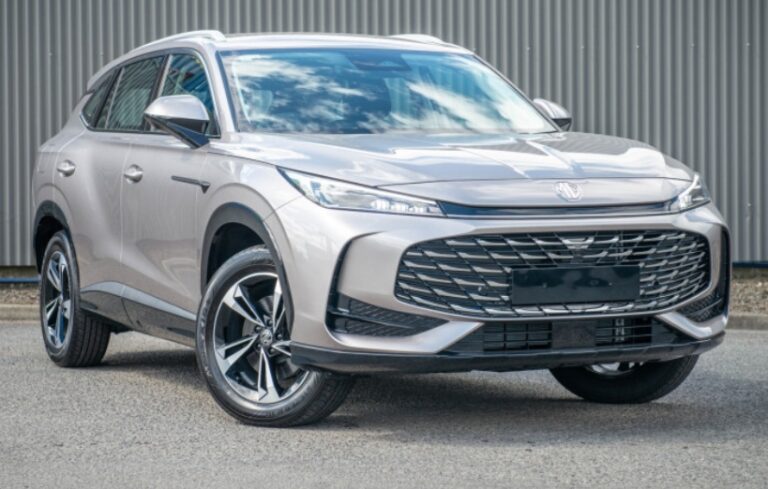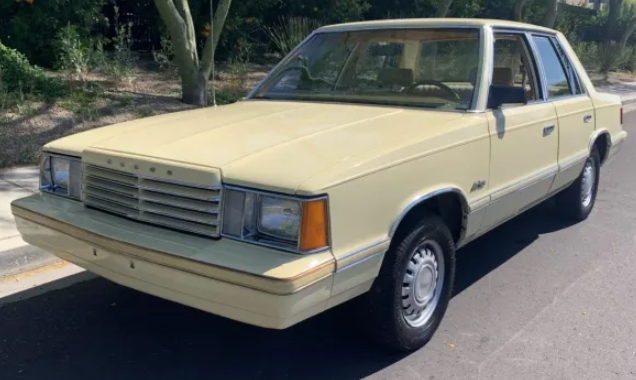The German Answer to an Indian Question: The Complete Evolution of the Volkswagen Ameo
In the vast and complex theatre of the global automotive industry, few phenomena are as intriguing as market-specific models. These are vehicles born not from a global design philosophy, but from the crucible of local regulations, consumer tastes, and economic realities. In India, no regulation has been more influential in shaping the automotive landscape than the sub-4-meter rule, a tax incentive that spawned a fiercely competitive segment of compact sedans. It was into this bustling arena that Volkswagen, a brand synonymous with precision German engineering, threw its hat with a unique and ambitious contender: the Volkswagen Ameo.
Produced from 2016 to 2020, the Ameo’s lifespan was short but significant. It was a car designed exclusively for the Indian market, representing Volkswagen’s most concerted effort to crack the code of the high-volume, budget-conscious buyer. This is the story of its evolution, a four-year journey of a car that aimed to bring German build quality and premium features to the heart of the Indian compact sedan segment.
The Genesis: A Strategic Necessity (Pre-2016)
Before the Ameo’s arrival, Volkswagen India’s portfolio consisted primarily of the Polo hatchback and the Vento sedan. While both were critically acclaimed for their solid build, stellar driving dynamics, and premium feel, they left a gaping hole in the company’s lineup. The sub-4-meter compact sedan segment, dominated by players like the Maruti Suzuki Dzire, Honda Amaze, and Hyundai Xcent, was where the volume sales were. These cars offered the aspirational value of a three-box sedan while benefiting from the lower excise duties afforded to vehicles under four meters in length with specified engine capacities (petrol under 1.2 litres, diesel under 1.5 litres).
Volkswagen’s challenge was immense. They needed to create a car that fit these stringent dimensional and engine criteria without compromising the brand’s core tenets of safety, quality, and performance. The solution was to leverage the robust and proven PQ25 platform that underpinned both the Polo and the Vento. The Ameo was, in essence, a Volkswagen Polo with a meticulously integrated boot, engineered at Volkswagen’s Chakan plant in Pune. The project involved a significant investment of ₹720 crore, underscoring its importance to the brand’s Indian operations. The tagline was clear: “Made for India, Made in India.”
.
THIS is GOOD stuff if your car is in need:

.
The Grand Debut: Setting a New Benchmark (2016)
The Volkswagen Ameo was officially launched in June 2016, and it immediately made a statement. While it shared its face and front half with the familiar Polo, the rear was an exercise in clever design, managing to add a boot without looking entirely disproportionate—a common pitfall for cars in this segment. But its true strengths lay beneath the sheet metal.
Engine and Transmission Options:
Initially, the Ameo was launched with only a petrol engine:
- 1.2-litre MPI Petrol: This was a 3-cylinder motor producing 75 PS of power and 110 Nm of torque, mated exclusively to a 5-speed manual transmission. While adequate for city driving, it was widely considered the weaker of the two eventual engine offerings.
The real game-changer arrived a few months later, in September 2016:
- 1.5-litre TDI Diesel: This was the engine that enthusiasts were waiting for. The updated 4-cylinder turbocharged diesel engine now produced a powerful 110 PS and a class-leading 250 Nm of torque. More importantly, it was offered with two transmission choices: a 5-speed manual and the highly coveted 7-speed DSG dual-clutch automatic. The Ameo TDI DSG was a segment-first, offering a level of performance and technological sophistication previously unseen in its price bracket.
Trim Levels and Features:
Volkswagen disrupted the segment by offering dual front airbags and ABS (Anti-lock Braking System) as standard across all variants, a significant safety commitment at the time. The Ameo was launched in three core trim levels:
- Trendline (Base): The entry point focused on safety and basics. It included dual airbags, ABS, Halogen headlamps, body-colored bumpers, a tilt-and-telescopic steering wheel, and front power windows. It was a spartan but safe package.
- Comfortline (Mid): This variant added a host of creature comforts, making it the value-for-money choice for many. Additions over the Trendline included a 2-DIN audio system with CD, USB, Aux-in, and Bluetooth connectivity, four speakers, all-four power windows, electrically adjustable ORVMs, front and rear fog lamps, and cooled glovebox.
- Highline (Top): This was the fully-loaded variant, designed to showcase Volkswagen’s premium offerings. It packed in features like alloy wheels, automatic climate control, a touchscreen infotainment system with a reverse parking camera, steering-mounted audio controls, leather-wrapped steering wheel and gear knob, and most impressively, cruise control and rain-sensing wipers—features that were unheard of in the segment.
The Middle Years: Refinements and New Power (2017-2018)
As the competition evolved, Volkswagen continued to refine the Ameo to keep it relevant. 2017 saw minor updates and the introduction of a new sub-variant.
- Ameo Highline Plus (2017): A slight enhancement over the Highline, this variant typically added a new, improved touchscreen infotainment system with Volkswagen’s App-Connect (supporting Apple CarPlay and Android Auto), offering better smartphone integration which was becoming a key selling point for consumers.
The most significant update of this period came in March 2018. Responding to feedback about the 1.2L petrol engine’s modest performance, Volkswagen replaced it entirely.
- New 1.0-litre MPI Petrol Engine (2018): The Ameo inherited the new 1.0-litre, 3-cylinder naturally-aspirated petrol engine from the updated Polo. While its power output was similar at 76 PS, it offered slightly lower torque at 95 Nm. The primary objective of this change was to improve fuel efficiency and refinement over the older 1.2L unit. This engine was also mated to a 5-speed manual transmission.
Volkswagen also introduced special editions to maintain customer interest.
- Ameo Pace & Crest Edition (2018): These were cosmetic packages. The Pace edition was based on the Comfortline trim and offered features like sporty carbon-fiber finished mirror caps and a black trunk-lid spoiler. The Crest edition offered a more premium aesthetic with a black roof, a distinctive crest badge on the C-pillar, and unique interior upholstery.
The Final Push: Sporty Aesthetics and Corporate Editions (2019)
In its final full year of production, Volkswagen made a last-ditch effort to inject excitement and value into the Ameo lineup.
- Ameo GT Line (2019): Leveraging the strong brand equity of its “GT” moniker from the Polo GT, Volkswagen introduced the Ameo GT Line. This was a purely cosmetic upgrade based on the Highline Plus diesel model. It featured a blacked-out roof and ORVMs, a subtle boot-lid spoiler, GT Line badging on the fenders, and sporty decals on the doors. This edition was aimed squarely at buyers who loved the performance of the 1.5L TDI but wanted a more aggressive look to match.
- Ameo Corporate Edition (2019): Simultaneously, Volkswagen also targeted a different set of buyers with the Corporate Edition. Based on the Comfortline trim, this version was offered at a special, lower price point exclusively for corporate customers, government employees, and professionals (like doctors and lawyers). It was a strategic move to boost sales numbers by offering a well-equipped variant at a more attractive price.
The End of an Era: Discontinuation in 2020
The Ameo’s journey came to an abrupt end in early 2020. Its discontinuation was not a result of a single failure, but a confluence of three major factors:
- The BS6 Emission Norms: The transition from BS4 to the much stricter BS6 emission standards, which came into effect in April 2020, was the primary catalyst. Upgrading the venerable 1.5-litre TDI diesel engine to meet these norms would have been prohibitively expensive. The required technology, such as a Selective Catalytic Reduction (SCR) system, would have significantly increased the Ameo’s price, making it unviable in its price-sensitive segment. Volkswagen, like many other manufacturers, decided to discontinue its entire small-capacity diesel engine lineup in India.
- Shifting Market Dynamics: By 2020, the Indian consumer’s preference was rapidly shifting from compact sedans to compact SUVs. The arrival of models like the Hyundai Venue and the continued dominance of the Maruti Vitara Brezza were shrinking the compact sedan pie.
- Volkswagen’s Future Strategy (India 2.0): Volkswagen Group had already announced its ambitious “India 2.0” project, which involved a massive investment in a new, highly localized platform: the MQB A0 IN. This platform would spawn a new generation of cars (later launched as the Taigun SUV and Virtus sedan). The older PQ25 platform, on which the Ameo was based, was destined to be phased out.
With its star diesel engine rendered obsolete by regulations and its segment losing ground to SUVs, the business case for continuing the Ameo petrol-only model was simply not strong enough. Volkswagen officially ceased its production ahead of the BS6 deadline.
Legacy
The Volkswagen Ameo remains a fascinating chapter in India’s automotive history. It was a meticulously engineered product, a bold attempt by a European giant to build a car by the Indian rulebook. For four years, it offered a unique proposition: the solidity, safety, and driving pleasure of a Volkswagen, packaged into a tax-friendly, sub-4-meter sedan.
While it never dethroned the segment leaders in sales, it carved a niche for itself among discerning buyers who prioritized build quality and performance over outright space or low running costs. The Ameo TDI, especially with the DSG gearbox, remains a cult favorite in the used car market, celebrated for its potent performance that could easily embarrass cars from a segment above.
The evolution of the Volkswagen Ameo—from its strategic conception to its feature-rich launch, its mid-life engine swap, and its eventual discontinuation—is a microcosm of the challenges and opportunities in the Indian car market. It stands as a testament to German engineering adapted for India, a compact sedan that punched well above its weight, leaving behind a legacy of safety, performance, and premium-ness in a segment that needed it most.
